This article was co-authored by Pradeep Adatrow, DDS, MS. Dr. Pradeep Adatrow is the only board certified Dentist, Periodontist, and Prosthodontist in the southern United States. With over 15 years of experience, Dr. Adatrow specializes in dental implants, TMJ treatments, periodontal plastic surgery, surgical and non-surgical periodontics, bone regeneration, laser treatments, and soft tissue and gum graft procedures. He received a BS in Epidemiology and Biostatistics from the University of Alabama and earned his Doctor of Dental Surgery (DDS) degree from the University of Tennessee College of Dentistry. Dr. Adatrow then completed a three-year postgraduate program in periodontics and implantology at Indiana University and went on to complete another three-year postdoctoral program in advanced prosthodontics from the University of Tennessee. He also serves as a full-time professor and the Director of Surgical Prosthodontics at the University of Tennessee. Dr. Adatrow received the Dean's Junior Faculty Award and the John Diggs Faculty Award, and he was inducted into the Deans Odontological Society. He is board certified by the American Board of Periodontology and is a Fellow of the prestigious International College of Dentistry – a feat that only 10,000 others worldwide can claim.
There are 10 references cited in this article, which can be found at the bottom of the page.
wikiHow marks an article as reader-approved once it receives enough positive feedback. In this case, 80% of readers who voted found the article helpful, earning it our reader-approved status.
This article has been viewed 84,429 times.
Your temporomandibular joint (TMJ) connects your lower jawbones to your skull on the side of your head. A TMJ disorder is a condition that causes pain and dysfunction in your jaw, your jaw joint, and the facial muscles that help to move your jaw. Fortunately, with a combination of lifestyle strategies and non-invasive medical and dental treatments, most people can get rid of TMJ problems without resorting to surgery.
Steps
Using Lifestyle Strategies
-
1See your dentist, who may prescribe physical therapy exercises.[1] There are a variety of exercises that can be used in the treatment of TMJ problems. The main aim of these exercises is to make use of your jaw muscles and to increase the jaw's mobility without fear of pain.
- Most exercises are focused on relaxing the muscles of your neck, your shoulders, and your jaw. Tension in any of these can worsen TMJ pain.
- If your dentist identifies "trigger points" for your TMJ pain (trigger points are areas of muscle that are prone to causing you pain), she may recommend that you see a massage therapist for help in loosening these muscles.[2]
-
2Avoid motions or activities that cause pain to your jaw.[3] This may sound obvious, but avoiding triggers for your jaw pain, such as chewing gum, yawning, or even singing, can help to prevent worsening of the pain. Also, eating softer foods can help, as this decreases the stress and strain of chewing.[4]
- Pencil biting, pipe smoking and other repetitive movements and positions (such as with playing certain instruments like the violin or viola) are also thought to be associated with TMJ.
- Opt for foods such as oatmeal, eggs, mashed potatoes, soups, and other options that are gentle on your jaw in order to decrease the pain.
Advertisement -
3Focus on good posture.[5] Especially for those who work at a computer all day, getting up to move around and changing posture frequently is important. TMJ problems can be worsened by tense neck and shoulder muscles, which happens frequently to those who are poised over a computer keyboard all day.[6]
- If at all possible, break up your workday by scheduling in a walk or other activity every couple of hours. This will give your neck and shoulder muscles a chance to relax, and may help to ease the discomfort in your TMJ.
- In addition, pay attention to sleeping positions. Sleeping on your side or stomach may put pressure on your jaw, exacerbating TMJ pain. Try to sleep on your back instead, and don't elevate your head too much.
-
4Apply heat to relax your jaw muscles. Applying heat can increase the blood flow to your jaw muscles and help to relax them. Start by taking a warm, moist towel and place it on the side of your jaw. Apply the towel for five minutes or until you feel increased comfort.[7]
- You can apply this warm, moist towel four to five times in a day.
- This procedure can help relieve discomfort and increase jaw flexibility.
-
5Use ice packs to help relieve pain.[8] Applying ice packs can reduce the inflammation and pain by constricting the blood vessels around your TMJ. Use a cold pack, take a plastic bag and fill it with ice cubes, or simply keep a towel in your freezer and apply it on your jaw and face. Apply it for 10 minutes each time, four to five times per day.[9]
- Always wrap cold packs in a towel before applying them to your skin. Putting ice or a cold pack directly on your skin can cause frostbite.
-
6Massage your jaw area to relax your muscles. Give yourself a gentle massage with your fingertips to relax your jaw muscles and to provide relief from muscle tightness. Take two fingers and apply firm pressure with your fingertips over your jaw area. Move your fingertips over the jaw areas in perpendicular and small sweeping motions.[10]
- You can do this gentle massage for one to two minutes initially, and then three to five minutes on each side of your jaw.
- Always be gentle to avoid further problems and pain.
-
7Get physically active.[11] If you don't already exercise regularly, now may be a good time to start! Exercise produces endorphins, which are natural pain-killing chemicals in the brain. As a result, maintaining a healthy exercise regime can help to combat the pain in your jaw. A general guideline to follow is to do moderate-intensity aerobic exercise for 30 minutes at least five times per week, or 150 minutes total. Ideally, you want to choose sports that elevate your heart rate such as swimming, biking, speed walking, or running.
- In addition to aerobic exercise, try to incorporate two to three days of strength training, which will build muscle and improve bone density.
Using Medical and Dental Treatments
-
1Take over-the-counter painkillers to reduce mild to moderate inflammation and pain. Using over-the-counter painkillers can inhibit the production of prostaglandin, the substance responsible for pain and inflammation in your body. Do not take these drugs continuously for longer than 10 to 14 days. Any of the following can be tried for pain control:[12] [13] [14]
- Naproxen (275-500 mg twice a day). Naproxen works by inhibiting the release of inflammatory substances, COX-1 and COX-2. This is the medication of choice for treating joint inflammation, because it has been proven to be effective in joint diseases.
- Ibuprofen (200-800 mg every six hours). Ibuprofen provides fast-acting pain and inflammation relief when taken in liquid gel form.
- Acetaminophen (500-1000 mg every four to six hours). This does not help with inflammation, but can serve to combat pain.
-
2Use muscle relaxants to relax your jaw muscles. These are available over-the-counter or by prescription. Your best bet is to speak to your dentist if simple over-the-counter painkillers have not been sufficient to control your pain. Your dentist can then advise you on which type of muscle relaxant is most effective, or he can recommend another treatment altogether depending upon the nature and severity of your TMJ pain.[15]
- A short-term course of long acting benzodiazepines, such as Valium, can be used to treat severe acute TMJ symptoms.
-
3Try taking tricyclic antidepressants. These drugs, in low dosages, can help to relieve TMJ-related pain. An example of this medication is amitriptyline (Elavil). Start from a low dose of 10 milligrams, to avoid side effects. The dosage can be increased over time until the pain is relieved.[16]
- For patients who also experience anxiety and/or depression, treating the condition with methods such as medication or relaxation/stress management training can also be helpful for TMJ pain.
- Tricyclic antidepressants are generally considered after lifestyle changes, NSAIDs and muscle relaxers have shown to not be effective.
- Once the effective dose of the tricyclic has been determined, it is generally prescribed for up to four months and then tapered down to a lower dose.
-
4Take corticosteroids to reduce severe inflammation. Corticosteroids mimic your body's natural adrenal production, causing a reduction in inflammation and pain due to TMJ. Steroids are used when other treatments for TMJ have failed to relieve your pain and discomfort. Your dentist can inject the corticosteroids into your TMJ joint, to help relieve severe pain.
-
5Get an occlusal splint from your dentist to prevent teeth grinding and clenching.[17] If you have the habit of clenching your jaws and grinding your teeth, your dentist can take a teeth impression and make acrylic splints to fit on your upper and lower teeth. TMJ is weakly associated with teeth grinding (bruxism).[18] These splints help reduce your clenching and grinding habits by preventing the teeth from contacting each other.
- The shape of the splints also helps to keep your teeth in their appropriate positions and to correct bad bites.
- You can wear the occlusal splints throughout the day, except when you are eating.
- You can use night guards that are similar to splints during the night if you have a habit of grinding your teeth.
- Your dentist will advise you on the exact splints or mouth guards that will suit your TMJ problems.
- Using a splint in addition to making lifestyle changes is more effective in treating TMJ pain than using the splint alone.
-
6
-
7Try low-level laser therapy.[21] Low-level laser therapy (LLLT) is an infrared light therapy that a doctor administers directly to your Temporomandibular Joint. This therapy also helps stimulate body recovery.
-
8Have crowns and bridges put on to correct and adjust your bite. Replacing missing teeth by applying crowns, bridges, and grinding uneven surfaces helps to distribute the biting and chewing forces equally between all your teeth surfaces; however, correction and adjustment rarely provides full relief from TMJ problems.
-
9Look into osteopathic manipulative treatment (OMT) to relax your jaw muscles and ligaments. In osteopathic manipulative treatment (OMT), your dentist uses special forceps placed in between your upper and lower teeth to gently open your mouth. The mouth is gradually opened more and more on each visit. With the help of OMT, your ability to open your mouth will improve, even without muscle relaxants.[22]
-
10Try TENS (Transcutaneous electrical nerve stimulation). In TENS, a current or pulse of electricity is applied by a device to stimulate your nerves and contracted muscles. This stimulation makes the muscles contract and relax, almost as if they were massaging themselves. TENS also stimulates the production of endorphins, which are natural pain-relieving agents. It is a non-invasive method, and 30 – 60 minutes in each session of TENS normally provides a good result.[23]
Expert Q&A
Did you know you can get expert answers for this article?
Unlock expert answers by supporting wikiHow
-
QuestionHow can I fix my TMJ at home?
 Pradeep Adatrow, DDS, MSDr. Pradeep Adatrow is the only board certified Dentist, Periodontist, and Prosthodontist in the southern United States. With over 15 years of experience, Dr. Adatrow specializes in dental implants, TMJ treatments, periodontal plastic surgery, surgical and non-surgical periodontics, bone regeneration, laser treatments, and soft tissue and gum graft procedures. He received a BS in Epidemiology and Biostatistics from the University of Alabama and earned his Doctor of Dental Surgery (DDS) degree from the University of Tennessee College of Dentistry. Dr. Adatrow then completed a three-year postgraduate program in periodontics and implantology at Indiana University and went on to complete another three-year postdoctoral program in advanced prosthodontics from the University of Tennessee. He also serves as a full-time professor and the Director of Surgical Prosthodontics at the University of Tennessee. Dr. Adatrow received the Dean's Junior Faculty Award and the John Diggs Faculty Award, and he was inducted into the Deans Odontological Society. He is board certified by the American Board of Periodontology and is a Fellow of the prestigious International College of Dentistry – a feat that only 10,000 others worldwide can claim.
Pradeep Adatrow, DDS, MSDr. Pradeep Adatrow is the only board certified Dentist, Periodontist, and Prosthodontist in the southern United States. With over 15 years of experience, Dr. Adatrow specializes in dental implants, TMJ treatments, periodontal plastic surgery, surgical and non-surgical periodontics, bone regeneration, laser treatments, and soft tissue and gum graft procedures. He received a BS in Epidemiology and Biostatistics from the University of Alabama and earned his Doctor of Dental Surgery (DDS) degree from the University of Tennessee College of Dentistry. Dr. Adatrow then completed a three-year postgraduate program in periodontics and implantology at Indiana University and went on to complete another three-year postdoctoral program in advanced prosthodontics from the University of Tennessee. He also serves as a full-time professor and the Director of Surgical Prosthodontics at the University of Tennessee. Dr. Adatrow received the Dean's Junior Faculty Award and the John Diggs Faculty Award, and he was inducted into the Deans Odontological Society. He is board certified by the American Board of Periodontology and is a Fellow of the prestigious International College of Dentistry – a feat that only 10,000 others worldwide can claim.
Board Certified Dentist & Oral Surgeon
-
QuestionWhat triggers TMJ pain?
 Pradeep Adatrow, DDS, MSDr. Pradeep Adatrow is the only board certified Dentist, Periodontist, and Prosthodontist in the southern United States. With over 15 years of experience, Dr. Adatrow specializes in dental implants, TMJ treatments, periodontal plastic surgery, surgical and non-surgical periodontics, bone regeneration, laser treatments, and soft tissue and gum graft procedures. He received a BS in Epidemiology and Biostatistics from the University of Alabama and earned his Doctor of Dental Surgery (DDS) degree from the University of Tennessee College of Dentistry. Dr. Adatrow then completed a three-year postgraduate program in periodontics and implantology at Indiana University and went on to complete another three-year postdoctoral program in advanced prosthodontics from the University of Tennessee. He also serves as a full-time professor and the Director of Surgical Prosthodontics at the University of Tennessee. Dr. Adatrow received the Dean's Junior Faculty Award and the John Diggs Faculty Award, and he was inducted into the Deans Odontological Society. He is board certified by the American Board of Periodontology and is a Fellow of the prestigious International College of Dentistry – a feat that only 10,000 others worldwide can claim.
Pradeep Adatrow, DDS, MSDr. Pradeep Adatrow is the only board certified Dentist, Periodontist, and Prosthodontist in the southern United States. With over 15 years of experience, Dr. Adatrow specializes in dental implants, TMJ treatments, periodontal plastic surgery, surgical and non-surgical periodontics, bone regeneration, laser treatments, and soft tissue and gum graft procedures. He received a BS in Epidemiology and Biostatistics from the University of Alabama and earned his Doctor of Dental Surgery (DDS) degree from the University of Tennessee College of Dentistry. Dr. Adatrow then completed a three-year postgraduate program in periodontics and implantology at Indiana University and went on to complete another three-year postdoctoral program in advanced prosthodontics from the University of Tennessee. He also serves as a full-time professor and the Director of Surgical Prosthodontics at the University of Tennessee. Dr. Adatrow received the Dean's Junior Faculty Award and the John Diggs Faculty Award, and he was inducted into the Deans Odontological Society. He is board certified by the American Board of Periodontology and is a Fellow of the prestigious International College of Dentistry – a feat that only 10,000 others worldwide can claim.
Board Certified Dentist & Oral Surgeon Any action that you perform with your mouth that is not related to eating, drinking, or speaking is considered a parafunction. These parafunctional habits are bad for your dental and TMJ health. These would include biting fingernails, eating hard or chewy food, and voluntary or involuntary grinding of the teeth.
Any action that you perform with your mouth that is not related to eating, drinking, or speaking is considered a parafunction. These parafunctional habits are bad for your dental and TMJ health. These would include biting fingernails, eating hard or chewy food, and voluntary or involuntary grinding of the teeth. -
QuestionHow can I stop TMJ clicking?
 Pradeep Adatrow, DDS, MSDr. Pradeep Adatrow is the only board certified Dentist, Periodontist, and Prosthodontist in the southern United States. With over 15 years of experience, Dr. Adatrow specializes in dental implants, TMJ treatments, periodontal plastic surgery, surgical and non-surgical periodontics, bone regeneration, laser treatments, and soft tissue and gum graft procedures. He received a BS in Epidemiology and Biostatistics from the University of Alabama and earned his Doctor of Dental Surgery (DDS) degree from the University of Tennessee College of Dentistry. Dr. Adatrow then completed a three-year postgraduate program in periodontics and implantology at Indiana University and went on to complete another three-year postdoctoral program in advanced prosthodontics from the University of Tennessee. He also serves as a full-time professor and the Director of Surgical Prosthodontics at the University of Tennessee. Dr. Adatrow received the Dean's Junior Faculty Award and the John Diggs Faculty Award, and he was inducted into the Deans Odontological Society. He is board certified by the American Board of Periodontology and is a Fellow of the prestigious International College of Dentistry – a feat that only 10,000 others worldwide can claim.
Pradeep Adatrow, DDS, MSDr. Pradeep Adatrow is the only board certified Dentist, Periodontist, and Prosthodontist in the southern United States. With over 15 years of experience, Dr. Adatrow specializes in dental implants, TMJ treatments, periodontal plastic surgery, surgical and non-surgical periodontics, bone regeneration, laser treatments, and soft tissue and gum graft procedures. He received a BS in Epidemiology and Biostatistics from the University of Alabama and earned his Doctor of Dental Surgery (DDS) degree from the University of Tennessee College of Dentistry. Dr. Adatrow then completed a three-year postgraduate program in periodontics and implantology at Indiana University and went on to complete another three-year postdoctoral program in advanced prosthodontics from the University of Tennessee. He also serves as a full-time professor and the Director of Surgical Prosthodontics at the University of Tennessee. Dr. Adatrow received the Dean's Junior Faculty Award and the John Diggs Faculty Award, and he was inducted into the Deans Odontological Society. He is board certified by the American Board of Periodontology and is a Fellow of the prestigious International College of Dentistry – a feat that only 10,000 others worldwide can claim.
Board Certified Dentist & Oral Surgeon TMJ clicking happens when the jaw joint is put under excessive stress. Try to manage stress in your life by adhering to regular physical activity, meditating, engaging in breathing exercises, playing with your children or pets, and practicing mindfulness. Good posture is vital for your jaw health, so it is also essential that you correct your posture if necessary.
TMJ clicking happens when the jaw joint is put under excessive stress. Try to manage stress in your life by adhering to regular physical activity, meditating, engaging in breathing exercises, playing with your children or pets, and practicing mindfulness. Good posture is vital for your jaw health, so it is also essential that you correct your posture if necessary.
References
- ↑ Pradeep Adatrow, DDS, MS. Board Certified Dentist & Oral Surgeon. Expert Interview. 30 September 2020.
- ↑ https://health.clevelandclinic.org/stubborn-tmj-pain-try-trigger-point-massage-and-jaw-exercises/
- ↑ https://my.clevelandclinic.org/health/diseases/15066-temporomandibular-disorders-tmd-overview
- ↑ Pradeep Adatrow, DDS, MS. Board Certified Dentist & Oral Surgeon. Expert Interview. 30 September 2020.
- ↑ Pradeep Adatrow, DDS, MS. Board Certified Dentist & Oral Surgeon. Expert Interview. 30 September 2020.
- ↑ https://www.pennmedicine.org/updates/blogs/health-and-wellness/2020/september/tmj-pain-relief-8-best-practices-to-help-manage-tmd
- ↑ https://www.pennmedicine.org/updates/blogs/health-and-wellness/2020/september/tmj-pain-relief-8-best-practices-to-help-manage-tmd
- ↑ Pradeep Adatrow, DDS, MS. Board Certified Dentist & Oral Surgeon. Expert Interview. 30 September 2020.
- ↑ https://www.pennmedicine.org/updates/blogs/health-and-wellness/2020/september/tmj-pain-relief-8-best-practices-to-help-manage-tmd
- ↑ https://www.painscience.com/articles/spot-07-masseter.php
- ↑ https://www.nlm.nih.gov/medlineplus/ency/article/001227.htm
- ↑ Peterson, L. (1998). Contemporary oral and maxillofacial surgery. Missouri: Mosby-Year Book Inc.
- ↑ https://medlineplus.gov/ency/article/001227.htm
- ↑ http://www.mayoclinic.org/diseases-conditions/tmj/basics/treatment/con-20043566
- ↑ https://medlineplus.gov/ency/article/001227.htm
- ↑ http://www.mayoclinic.org/diseases-conditions/tmj/basics/treatment/con-20043566
- ↑ Pradeep Adatrow, DDS, MS. Board Certified Dentist & Oral Surgeon. Expert Interview. 30 September 2020.
- ↑ https://medlineplus.gov/ency/article/001227.htm
- ↑ Pradeep Adatrow, DDS, MS. Board Certified Dentist & Oral Surgeon. Expert Interview. 30 September 2020.
- ↑ https://my.clevelandclinic.org/health/diseases/15066-temporomandibular-disorders-tmd-overview
- ↑ Pradeep Adatrow, DDS, MS. Board Certified Dentist & Oral Surgeon. Expert Interview. 30 September 2020.
- ↑ https://www.ncbi.nlm.nih.gov/pubmed/28029069
- ↑ https://my.clevelandclinic.org/health/diseases/15066-temporomandibular-disorders-tmd-overview


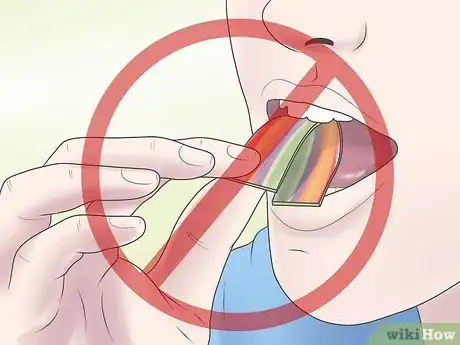

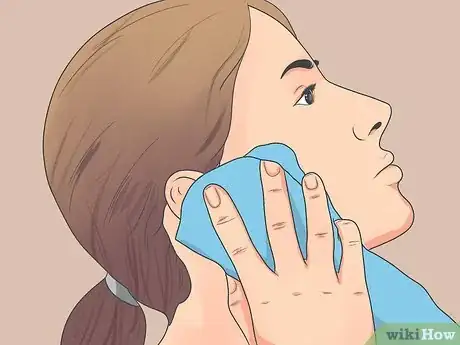
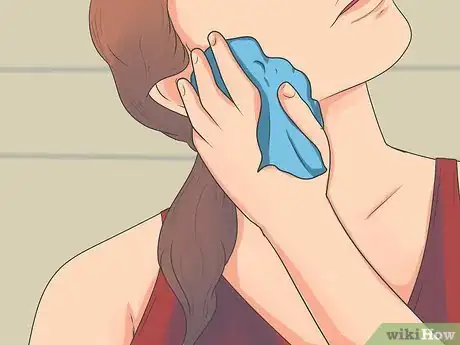
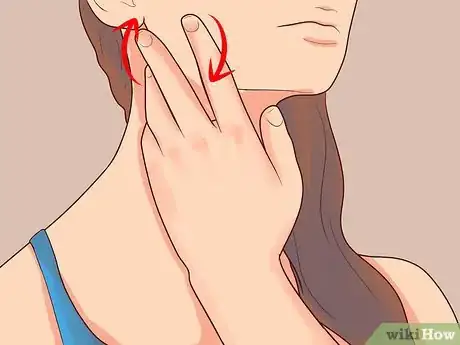

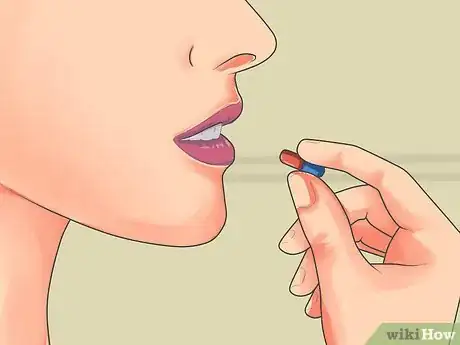


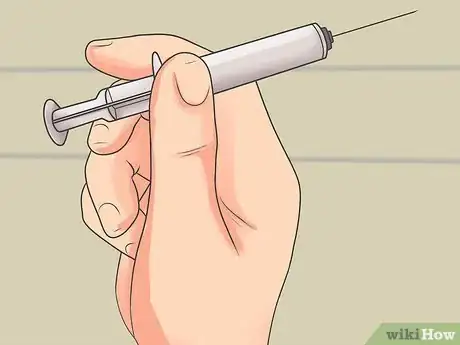
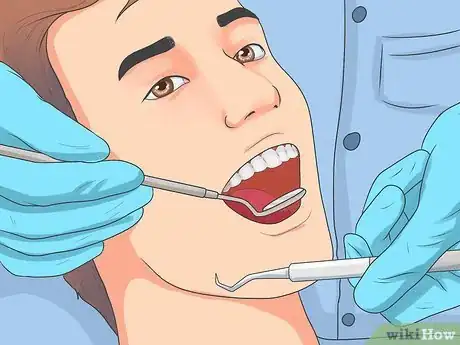

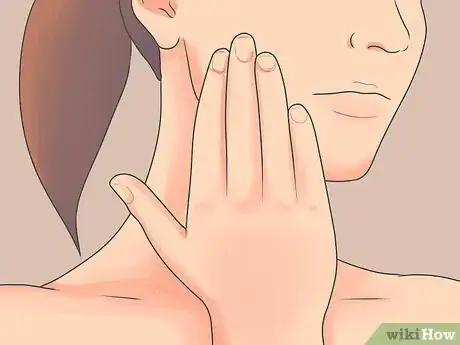
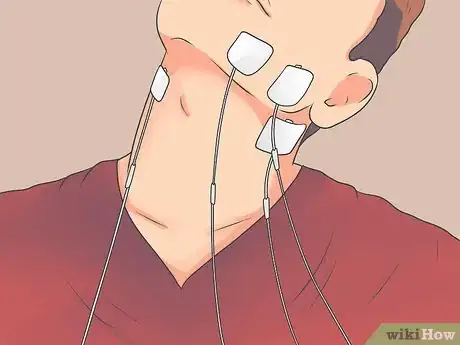

-with-Jaw-Exercises-Step-11.webp)
-Step-20-Version-2.webp)


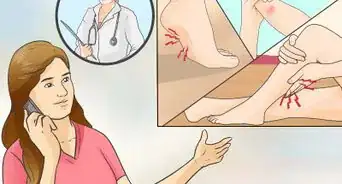













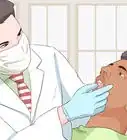
-with-Jaw-Exercises-Step-11.webp)
-Step-20-Version-2.webp)





































Medical Disclaimer
The content of this article is not intended to be a substitute for professional medical advice, examination, diagnosis, or treatment. You should always contact your doctor or other qualified healthcare professional before starting, changing, or stopping any kind of health treatment.
Read More...